To put it mildly, he is stunning, sporting an iridescent red head and turquoise upper parts, this tiny nectar sipper is the world’s smallest bird.
Meet the Bee hummingbird

Photo Courtesy of Charles J. Sharp/CC BY-SA 4.0
The bee hummingbird, zunzuncito, or Helena hummingbird (Mellisuga helenae) are the smallest known living birds in the world, comparable in size to bumblebees and lighter even than a Canadian or U.S. penny. They measure mostly between 1.97 – 2.36 inches or 5 – 6 cm in length – including beak and tail; and they weigh between 0.06 – 0.07 oz or 1.6 – 1.9 g. Breeding males have a glossy red-pink head, chin, and throat, along with an iridescent gorget (throat patch) and elongated lateral plumes. His upper plumage is bluish, while the rest of the under plumage is mostly a greyish white. His colorful plumage can only be seen during the breeding season and is shed shortly afterward.

Photo Courtesy of Charles J. Sharp/CC BY-SA 4.0
The female’s upper plumage is bluish-green, and her plumage below is a whitish/pale grey. Her outer tail feathers are white-tipped. juvenile males look similar to adult females.
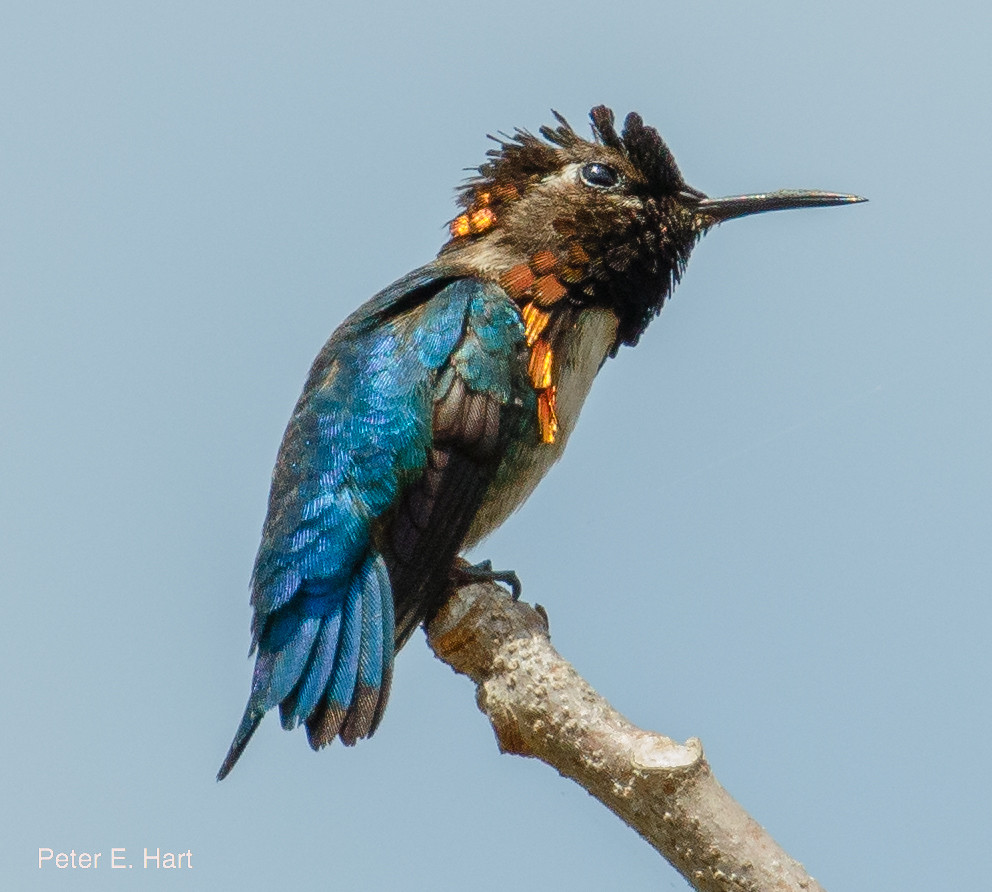
“Bee Hummingbird” by PEHart is licensed under CC BY-SA 2.0.
The Bee Hummingbird naturally occurs in Cuba – a Caribbean island situated south of Florida, USA.
There are also patchy populations found in Habana (the capital of Cuba), Sierra de Anafe, Guanahacabibes Peninsula, Zapata Swamp, Moa, Mayarí, and the coast of Guantánamo.
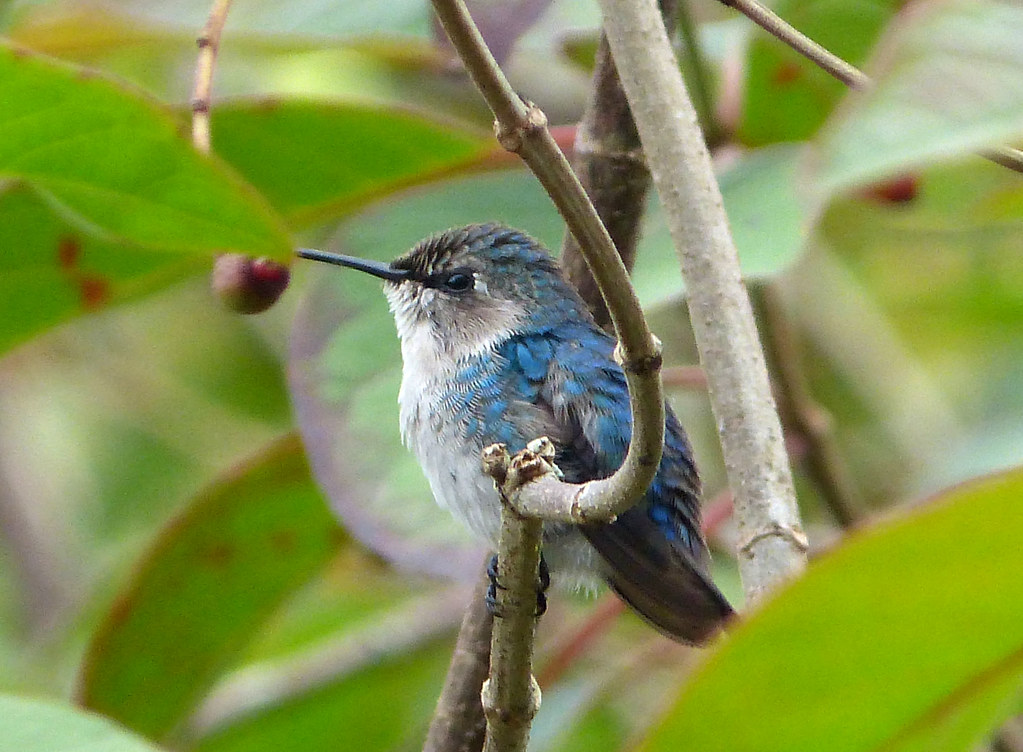
“Bee Hummingbird Mellisuga helenae. female” by gailhampshire is licensed under CC BY 2.0.
These birds primarily inhabit dense coastal forests and forest edges but are also found in mountain valleys, interior forests, swampland, and gardens. They prefer areas with the plant Solandra Grandiflora, a vine with large ornamental flowers, and their preferred source of nectar. Even though they appear to live at both high and low altitudes, it appears they prefer lowland areas.
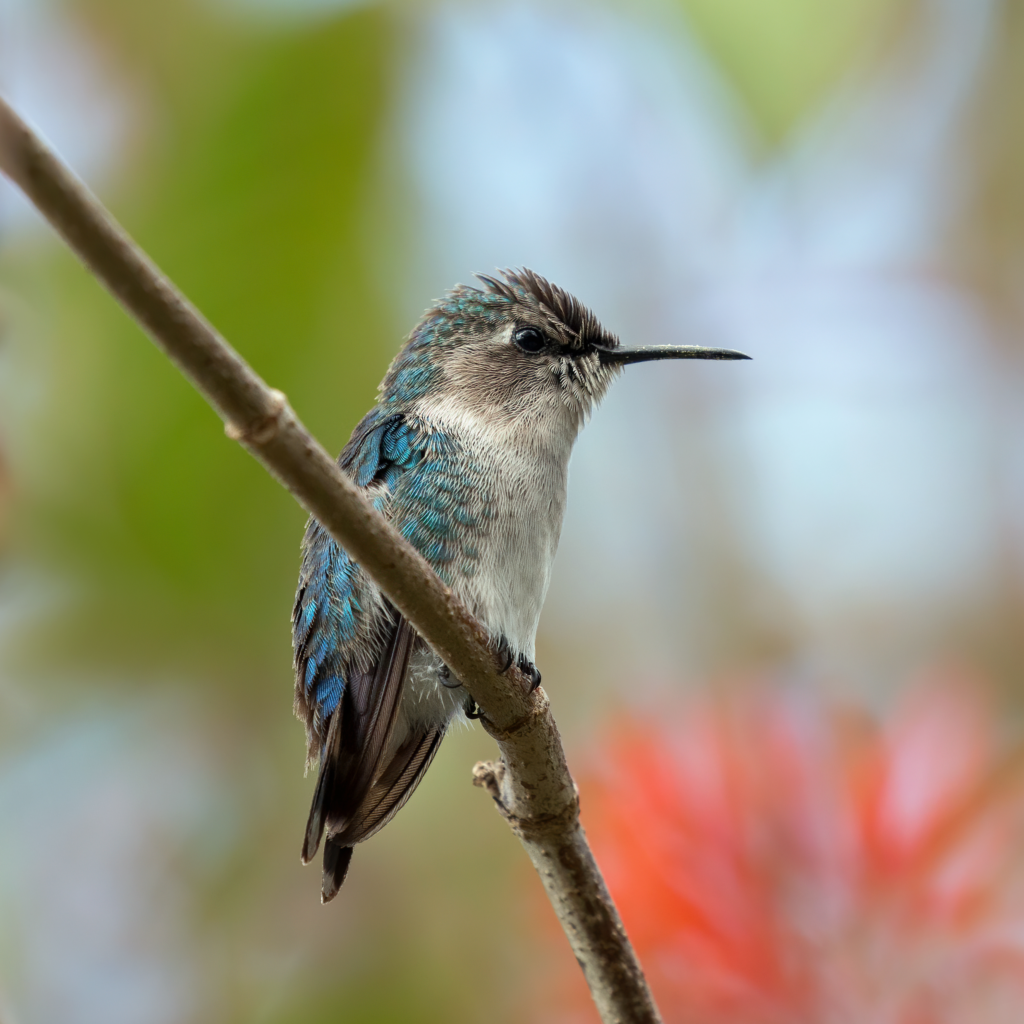
“File:Bee hummingbird (Mellisuga helenae) immature male.jpg” by Charles J Sharp is licensed under CC BY-SA 4.0.
Bee hummingbirds primarily feed on nectar taken from a variety of brightly colored, scented small flowers of trees, herbs, shrubs, and epiphytes visiting up to 1,500 flowers on an average day. They may visit local hummingbird feeders for some sugar water, or drink out of birdbaths or water fountains where they will either hover and sip water as it runs over the edge, or they will perch on the edge and drink like all the other birds. However, they only remain still for a short moment. They also take some small spiders and insects which are important sources of protein, something that is particularly needed during the breeding season to ensure the proper development of their young. Insects are often caught in flight (hawking); snatched off leaves or branches, or are taken from spider webs. A nesting female can capture up to 2,000 insects a day.

“Bee Hummingbird (Mellisuga helenae)” by Gregory ‘Slobirdr’ Smith is licensed under CC BY-SA 2.0.
These birds are solitary in all aspects of life other than breeding, with the male’s only involvement in the reproductive process being the actual mating act with the female. They neither live nor migrate in flocks, and there is no pair bond for this species. Males form leks (groups of singing males that participate in competitive courtship rituals). The males will perform various songs to attract females, which may be brief warbles or a repetition of a few notes. Females may visit several leks throughout the day and select a mate based on his performance. A single male may mate with several females in one season. In all likelihood, the female will also mate with several males. Mating can occur on a perch or while hovering in the air. The males do not participate in choosing the nest location, building the nest, or raising the chicks. The female is responsible for building the small cup-shaped nest out of plant fibers (about 1 inch or 3 cm in diameter), woven together and green moss on the outside for camouflage in a protected location in a shrub, bush, or tree. She lines the nest with soft plant fibers, animal hair, and feather down, and strengthens the structure with spider webbing and other sticky material, giving it an elastic quality to allow it to stretch to double its size as the chicks grow and need more room. The nest is typically found on a low, thin horizontal branch between 3 to 20 feet from the ground. The average clutch consists of two pea-sized white eggs, which she incubates alone for 14 to 16 days, while the male defends his territory and the flowers he feeds on. The chicks are brooded only the first week or two and are left alone even on cooler nights after about 12 days probably due to the small nest size. The chicks leave the nest when they are about 18 to 38 days old.
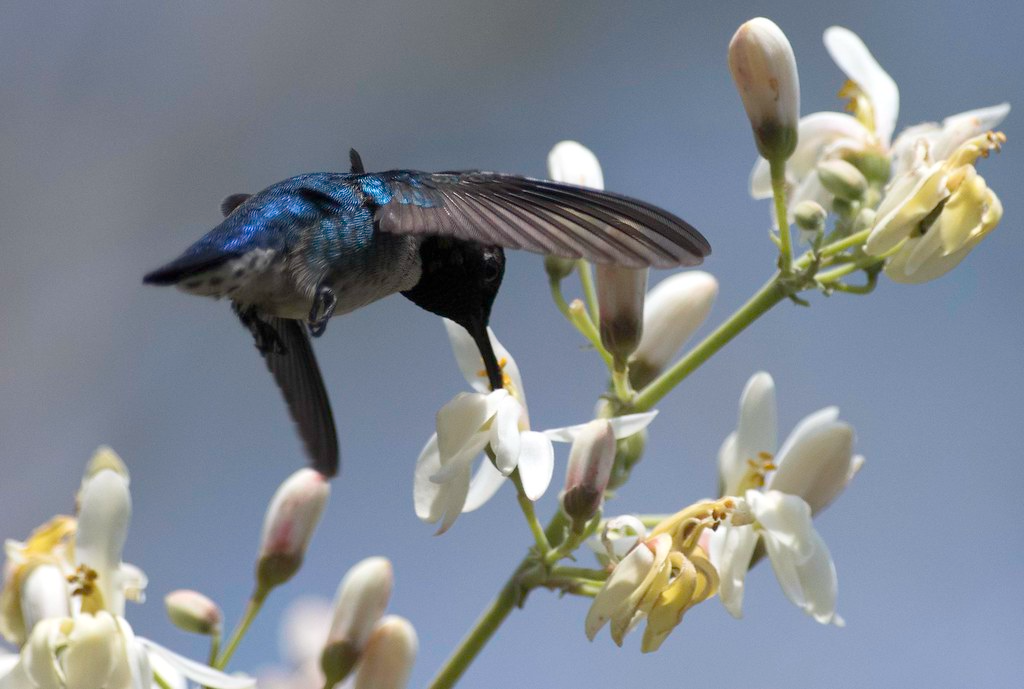
“bee hummingbird” by sueandgraeme is licensed under CC BY 2.0.
The Bee Hummingbird was formerly common and widespread but is now rare and localized. The principal threat to its existence is habitat loss. Large parts of Cuba’s natural vegetation have been converted for agricultural uses, with only 15-20% of land remaining in its natural state.
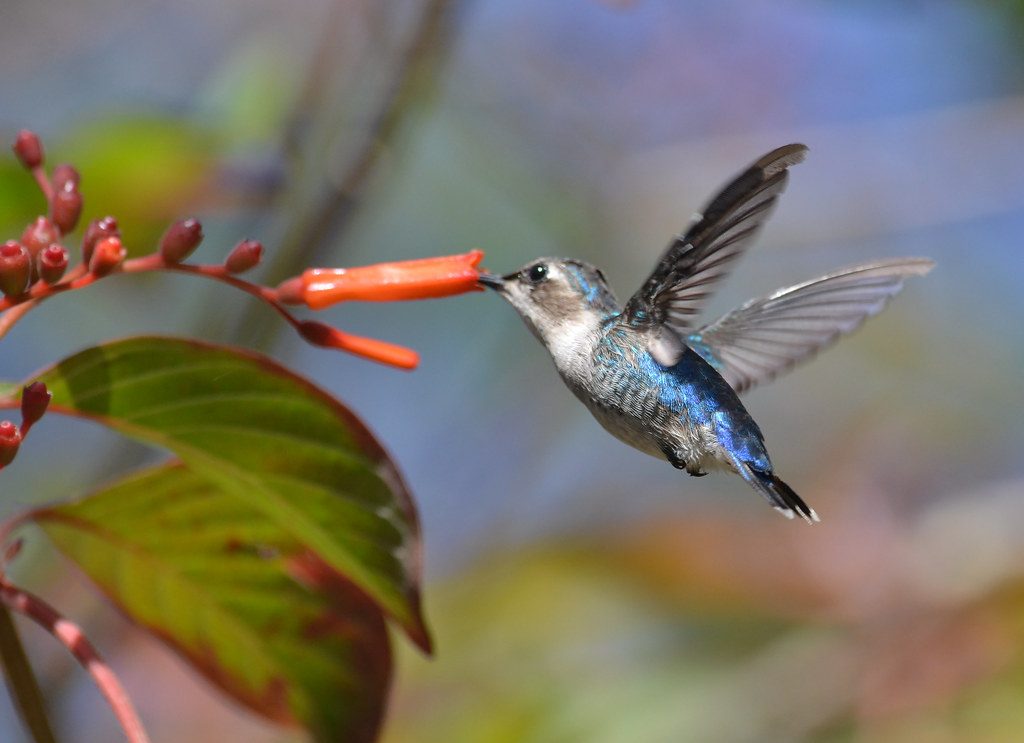
“Mellisuga helenae” by Papchinskaya is licensed under CC BY 2.0.
Numbers have been declining in recent years and these birds are now classified as Near Threatened.
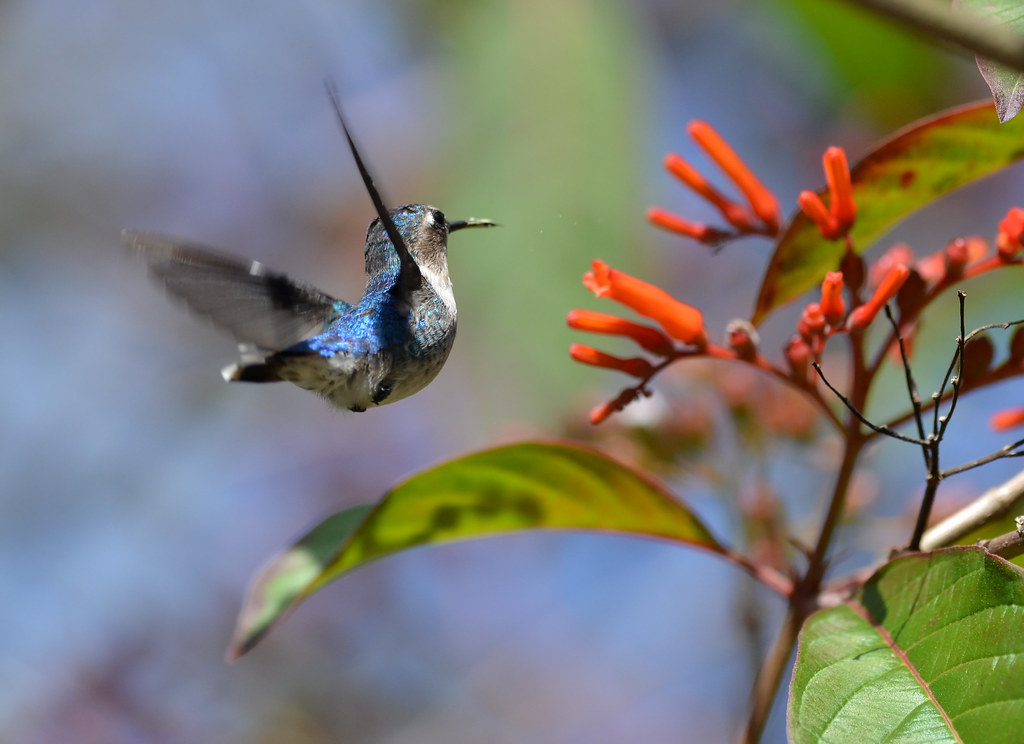
“Mellisuga helenae” by Papchinskaya is licensed under CC BY 2.0.
Watch this bird right here in the video below:




